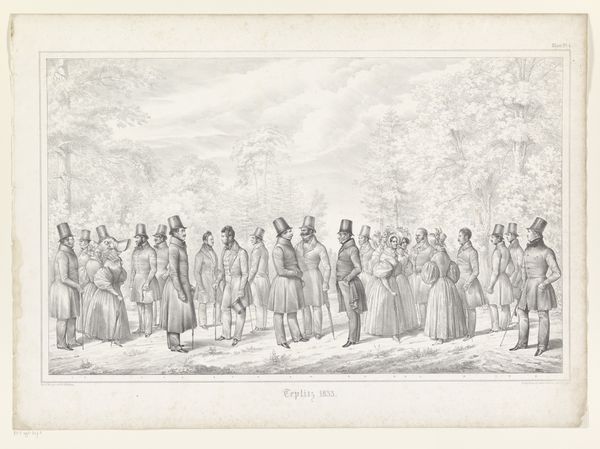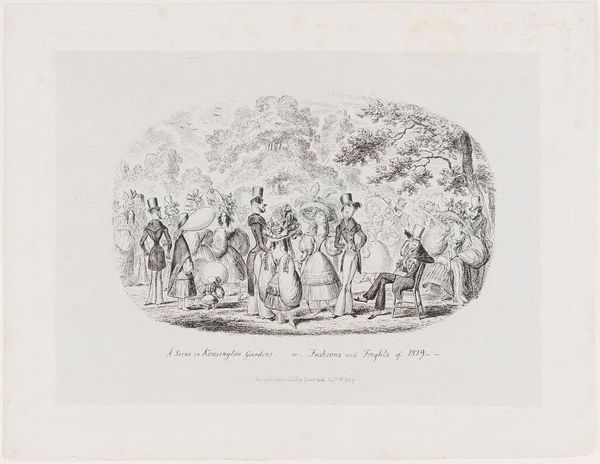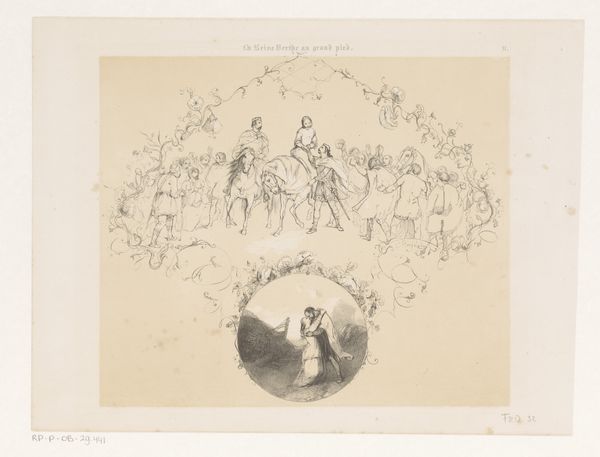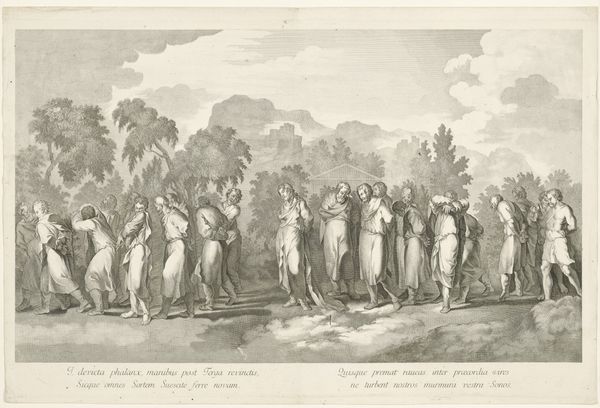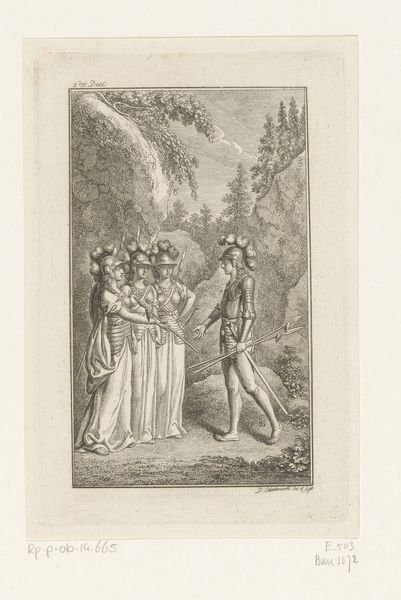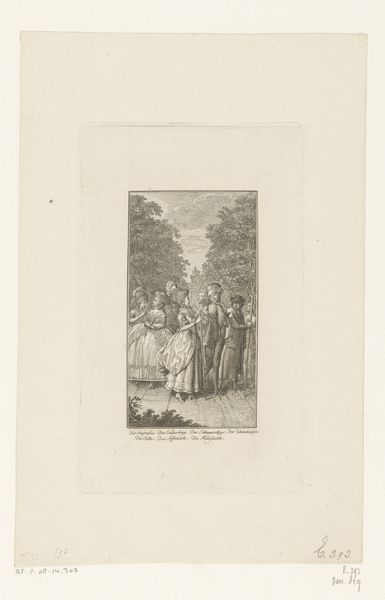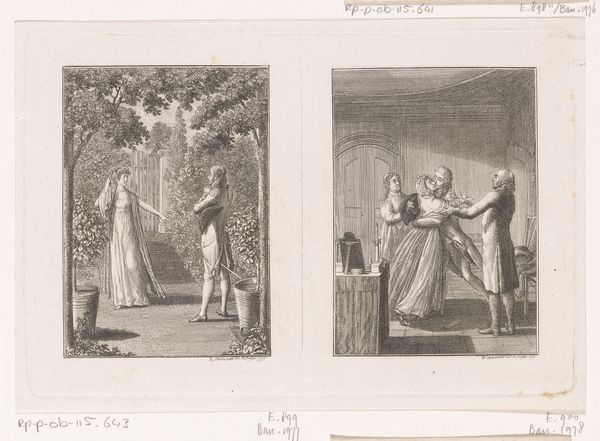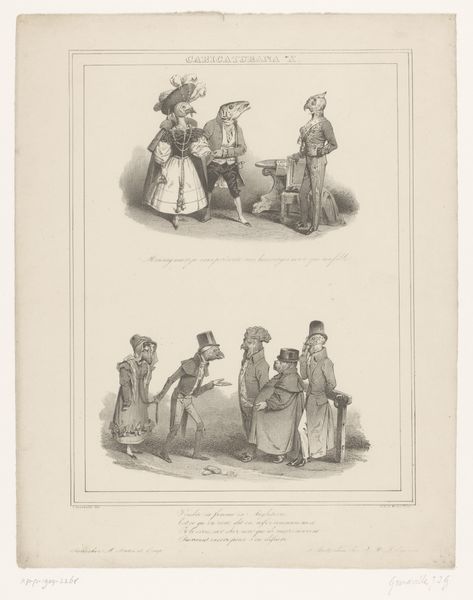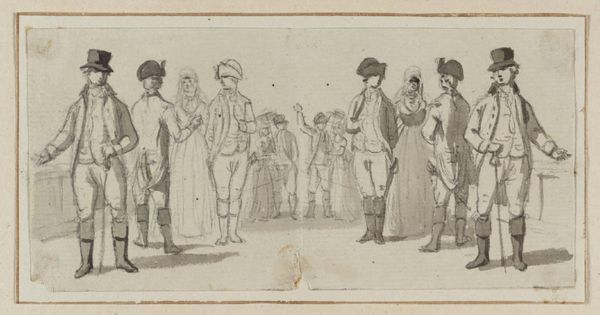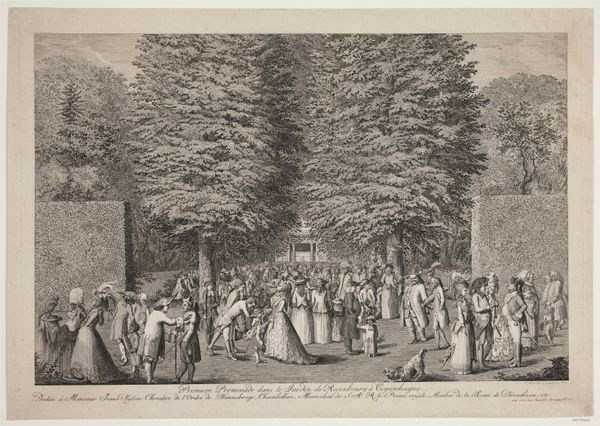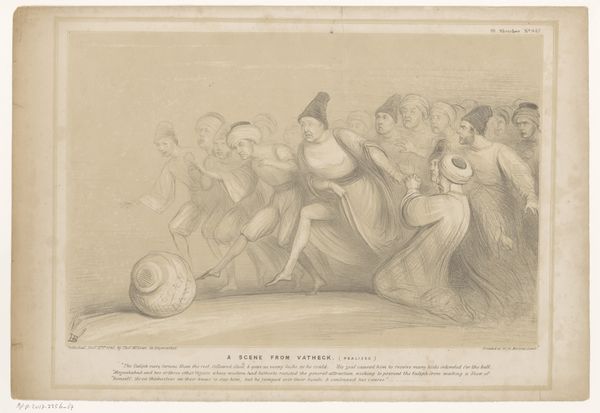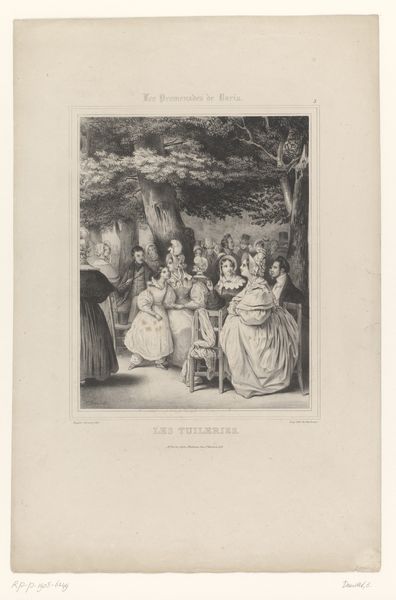
drawing, pencil
#
pencil drawn
#
drawing
#
aged paper
#
light pencil work
#
pencil sketch
#
old engraving style
#
figuration
#
personal sketchbook
#
pen-ink sketch
#
pencil
#
line
#
pen work
#
sketchbook drawing
#
cityscape
#
pencil work
#
genre-painting
#
history-painting
#
academic-art
#
realism
Dimensions: height 518 mm, width 715 mm
Copyright: Rijks Museum: Open Domain
Curator: This captivating drawing, created in 1833 by Theodor Hosemann, is titled “Portretten van veertien personen te Teplice,” or "Portraits of fourteen people in Teplice." It’s rendered in pencil. What are your immediate thoughts? Editor: It's like a scene from a Jane Austen novel, all poised respectability and subtle observation. Though there's a quiet, almost melancholic atmosphere hovering. Perhaps it's the muted palette? Curator: Yes, the artist uses light pencil work. These muted tones accentuate the composition's emphasis on form. Look how each figure, with their almost identical attire, emerges distinctly, telling stories of identity and societal standing. Do you pick up on particular visual cues in this encoding? Editor: Totally! There's a fascinating balance between uniformity and individuality. It makes you wonder, doesn’t it, how much of ourselves we choose to show, even within the most rigid social frameworks. Like, what stories are hidden beneath those top hats? Curator: Indeed. Top hats, here, represent an attempt to normalize and define identity. In other words, the clothing is the symbolic mask they all wore, regardless of the reality underneath it. Consider Teplice at this moment in history; it was a popular spa town attracting the elite. These portraits capture a specific cultural performance. Editor: Oh, I love that! It's like they're all consciously performing their roles in this open-air theatre, the spa town acting as the stage. Even their pairings and groupings seem meticulously arranged, almost as if they're narrating little subplots within the bigger social drama. What kind of conversations and societal posturing do you think played out among these fourteen people in 1833? Curator: Well, spa towns, particularly in the 19th century, were known as neutral meeting points for those who wanted to cement trade relationships or seek the hands of noble daughters in marriage. Their portraits speak volumes, acting as visual anchors linking cultural memory to psychological experience, allowing us to reflect on universal aspects of identity performance. Editor: It's like peering into a time capsule of societal rituals and personal ambitions. It makes me reflect on the invisible costumes and performance dynamics we all participate in today, online and off. Curator: Absolutely. The pencil lines feel light, as though Hosemann, ever aware of his delicate place within a hierarchical society, didn’t dare bear down too hard with the pencil. Editor: A quiet rebellion in pale graphite. Now that's art!
Comments
No comments
Be the first to comment and join the conversation on the ultimate creative platform.

